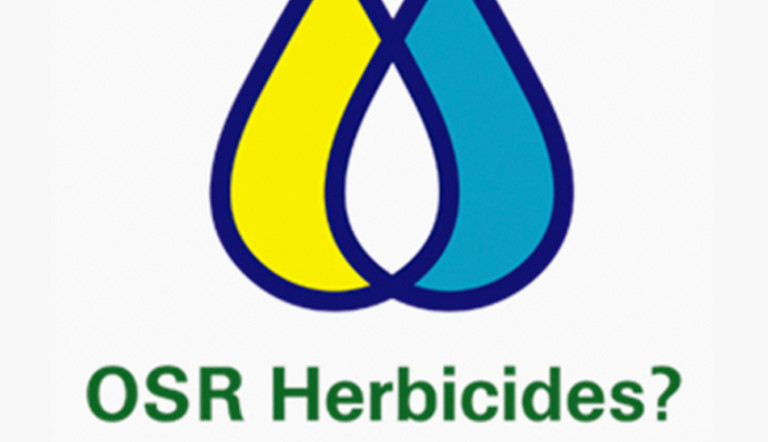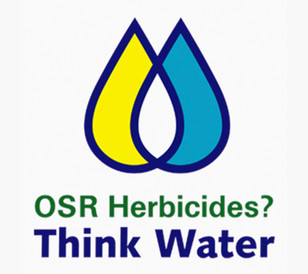
The importance of using OSR herbicides responsibly

Put simply, unless more is done to prevent these products from entering waterways, tightening regulatory restrictions will force farmers to face a future with fewer active ingredients and a significantly reduced crop protection arsenal.
As the key pre- and early post-emergence weed control active in oilseed rape (approximately 65% of the UK’s oilseed rape crop area receives a herbicide containing metazachlor), metazachlor is of particular importance in many arable rotations: especially as oilseed rape provides an opportunity to manage problem grass weeds as part of an integrated rotation and herbicide regime. However, metazachlor, plus other oilseed rape actives , have been reaching surface water that is abstracted for drinking water. As such, the use of these chemicals is under close scrutiny, with the Water Framework Directive requiring a reduction in contamination at source rather than increasing reliance on water treatment.
For now, the guidelines set out within DEFRA’s mandate to reduce pesticides are entirely voluntary. But whilst DEFRA and the Drinking Water Inspectorate (DWI) understand growers’ needs for a full and effective range of pesticides, they have not ruled out the regulatory approach. The reality is that pesticides are still finding their way into water: more therefore needs to be done if we are to limit further product restrictions being enforced.
For that reason, ADAMA is working with the crop protection industry, the CPA (Crop Protection Association), the VI plus a number of water companies and other stakeholders, including the NFU, AIC and AICC, to raise awareness of the issue through the OSR Herbicides: Think Water initiative. In 2018, the Metazachlor Matters stewardship campaign, championed by ADAMA and BASF, has been integrated into the wider OSR Herbicides? Think Water initiative, in order to streamline stewardship messages for the agricultural industry.
The key steps:
- Identify if your land is in a Drinking Water Safeguard Zone*
- Speak to your local water company catchment officer, or agronomist
- Implement best pratice OSR agronomy to protect water
- Manage tramlines, pathways and gateways to minimise compaction and reduce the risk of surface water run-off
- Ensure all surface water adjacent to oilseed rape fields is protected by at least a 6m vegetative buffer strip
- Before making applications, always refer to product specific labels and the VI Water Protection Advice Sheets (WPAS)
The Metazachlor Matters guidelines are based on agronomic best practice and changing on-farm practices to maintain the long-term availability of metazachlor and quinmerac. The guidelines remain relevant within the scope of the OSR Herbicides stewardship, and whenever herbicides containing metazachlor or quinmerac are applied the MM guidelines should be followed.
Herbicides such as metazachlor,quinmerac, carbetamide, propyzamideand chlorpyralid can get into water via two main sources:
- Spillages occurring in the farm yard during the handling, mixing and cleaning down processes: these sources can be significant but can easily be avoided by adopting good operator practice
- Field sources such as surface run-off or via field drainage. Avoiding pollution via field sources represent a far greater challenge but can be minimised by ‘thinking agronomically’.
‘Thinking agronomically’ means aiming to establish the crop early (ideally by the first week of September) and applying metazachlor and quinmerac early to oilseed rape: this is particularly important on drained soils where the risk of pollution increases with the onset of autumnal weather conditions (heavier, more consistent and more regular rainfall).
The guidance for autumn applications of metazachlor and quinmerac is therefore as follows:
- Dose: Maximum 750g metazachlor/ha - Reducing the amount of active ingredient applied, reduces the risk of movement to water
- Timing: Where there are no field drains, there are no timing restrictions. Where fields are drained, including temporary drains, aim for an application before 1st October, with a final cut off of 15th October. Applications after the 1st October can be made as long as soil and seedbed conditions are good and drains are not flowing (use Adama’s WaterAware app to determine whether or not it is safe to apply). For drained fields in Drinking Water Safeguard Zones, apply metazachlor no later than 1st October: click here to establish if you have fields in a higher risk area
The guidance for autumn applications of carbetamide is as follows:
- Application: Best applied early in the autumn as part of a black-grass control program; avoid use if drains are flowing or are likely to flow in the near future
NB: These guidelines should be applied to all oilseed rape products containing metazachlor and quinmerac, not just those supplied by ADAMA or BASF.
For more information about the OSR Herbicides? Think Water Stewardship and to see the latest recommendations in full, visit the Voluntary Initiative Think Water website.
For more information of the specific recommendations when using carbetamide, metazachlor or quinmerac, take a look at the Water Protection Advice Sheets.
*DWSgZ = Identified areas where inappropriate use of fertiliser, pesticide or other chemicals can cause pollution of water that is abstracted for use as drinking water.
OSR Think Water Leaflet
OSR Herbicide Stewardship FAQ's
OSR Herbicide Think Water - Incorporating Matazachlor Matters
